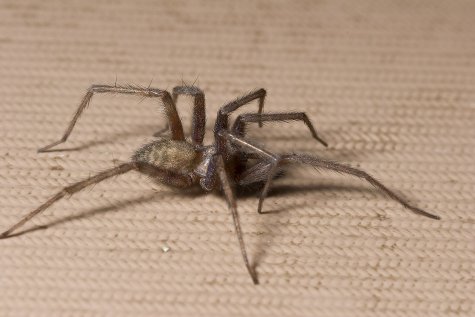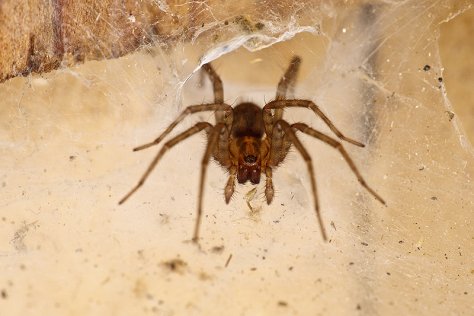House animals
Photos: Urmas Tartes
Translation: Liis
|
House spider; Barn funnel weaver |
Harilik majaämblik
|
Tegenaria domestica |
Where people live, the environment becomes suitable for house spiders. If a diligent housewife doesn’t allow the house spider to settle down in the family rooms, it tries its luck in the garage, a shed or the cellar. A humid environment is even preferable, because the house spider must fill its water requirement – to keep from becoming desiccated - from the body fluids of its prey. The house spiders lead a concealed life: they are active in the night and prefer to keep to the darker corners. Houseowners rather suspect than see their presence. The incredibly fine web becomes visible only when it gets covered with dust, but then it has become visible to the prey animals too. Such webs can be swept away without qualms; the spiders are surely already on new hunting grounds. Setting up a new web is quick work and doesn’t use up much resources, but if the apartment is swept and tidied up too often the lodger will usually move out.
Usually a human and the house spider only meet when the latter has fallen in a trap: fallen into an open vessel, dropped into the wash-basin, the bath-tub or any such place. And now it is really time to talk about spider phobia or arachnophobia. The sufferings vary, ranging from slight aversion to sheer panic, and it may occur among women and men alike. It is a modern disease: contact with these abhorred insects and other little animals is minimal for people today. Luckily there is usually someone in the house to help the sufferer. The house spider eliminates other insects and in one way this coexistence is useful.










